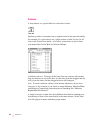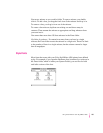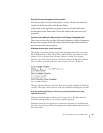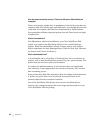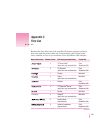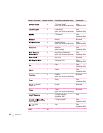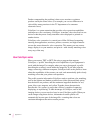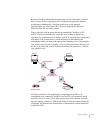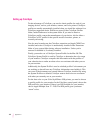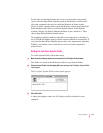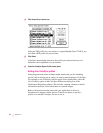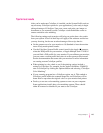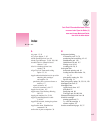
Further compounding the problem is that no two monitors or printers
produce exactly the same colors. (For example, you can see differences in
color ability among monitors in the TV department of a consumer
electronics store.)
ColorSync is a system extension that provides color-conversion capabilities
and improves color consistency. ColorSync “translates” the colors used on one
device so that they more closely match the colors displayed or printed on
another device.
ColorSync color conversion is a central part of Mac OS–based computing,
ensuring that applications, monitors, printers, scanners, and digital cameras
can use the same scheme for color conversion. This means you can scan an
image, display it on your monitor, and print it—with visually matching colors
every step of the way.
How ColorSync works
When you create a TIFF or PICT file using a program that supports
ColorSync, a “profile” describing the color capabilities of your equipment is
saved with the image. For example, when you scan a photograph, a profile
describing the scanner is saved inside the image file. If you later print the
image, even using a different computer, ColorSync looks at the profile to learn
about the capabilities of the scanner you used, and automatically picks closely
matching colors that your printer can reproduce.
The profile contains information ColorSync needs to perform color matching,
such as the lightest and darkest possible tones (white point and black point)
that the device can produce, and the maximum supported densities for red,
green, blue, cyan, magenta, and yellow. Together, these characteristics
describe the color gamut (or range) that a device is capable of capturing,
displaying, or reproducing. To take advantage of ColorSync, each of the
imaging devices you use needs to have its own ColorSync profile. When you
create images using these devices, information from the profile will
automatically become part of the image file—ensuring that colors are
consistent throughout the entire creative process.
110
Appendix D



